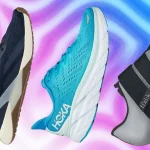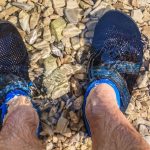There were these three years in-between 2009 to 2016 where it seemed like every runner wanted a shoe with an ‘extra’ drop.
Also called the heel-to-toe offset, the drop is the difference between how thick the forefoot is compared to how thick the heel is. For example, if a midsole has an 18 mm thick heel and 10 mm thick forefoot, it would have an 8 mm drop.
Running shoes has gone through a stage of trends. Ten years ago, it was the barefoot running trend when people began wearing Vibram Five Fingers, Vivobarefoot and Nike Free. This led to misinformation about high-drop shoes being superior than those without it even though there are many benefits to both types of running shoes.
Then there was the period of maximalist cushioning which led to Hoka’s growth. Still out of that phase, the max-cushioning has evolved into a plate in midsole category; due to its popularity with Nike Vaporfly.
Fortunately, the infatuation with heightening numbers of high heels in recent years has subsided, as it should. Many brands have even stopped displaying heel-to-toe measurements on their specification sheets for shoes.
Getting fixated on just the offset when buying a new pair of shoes can be harmful – it doesn’t matter if they’re made for a midfoot strike or not.
There are many different factors which affect whether or not a running shoe will work for someone who lands on their toes. Is there room at the front of the sole to accommodate someone with wide feet? And how much give is there in this place at the ball of one’s foot?
In our detailed Buyer’s Guide, we examined all of the various factors that make a running shoe suitable to someone who runs on either their forefoot or heel.
Based on our experience and reader feedback, an ideal running shoe for most people has an 8-10mm offset due to a variety of reasons.
The perfect middle ground is an 8 mm offset
Even though Saucony specializes in low drop running shoes (Kinvara) they also have high heel-to-toe offsets on their other styles, such as Ride 15 or Guide 15 which both have 8mm gradients.
On one hand, companies like Altra base their entire catalogue of footwear on the zero-zero form factor while remaining a small player. On the other side there are brands such as Brooks who offer shoes that range from a 12mm offset to 8mm respectively; making it clear which is neither too low nor overly minimal.
There is less likelihood of Achilles tendon soreness
A lower ‘drop’ (height) also lowers the position of the heel, thus stretching the Achilles tendon. Though the human foot has a zero mm ‘drop’, (height), most people aren’t accustomed to footwear without a heel.
Therefore, transitioning from a 12 mm drop shoe to 0 mm may require an adjustment period. An 8 mm drop running shoes has little-to-no need for acclimatization.
All levels of experience can use it
An 8 mm offset is versatile enough to be utilized across all categories of footwear.
It is found in most regular training shoes, such as the Asics GT-2000 and Saucony Ride, but also in some more specialized high end running footwear such as the Adidas Adios 6 or Saucony Endorphin Speed 2. Even some trail runners have it; for example, the New Balance Hierro or Nike Wildhorse.
New runners won’t have to search long for comfort in these shoes, and experienced runners will easily find themselves slipping back into their routine. With its 8-10mm of drop from heel to toe, it’s easy to take what you’ve learned from previous seasons and apply them now too.
In the gym, higher heels are useful
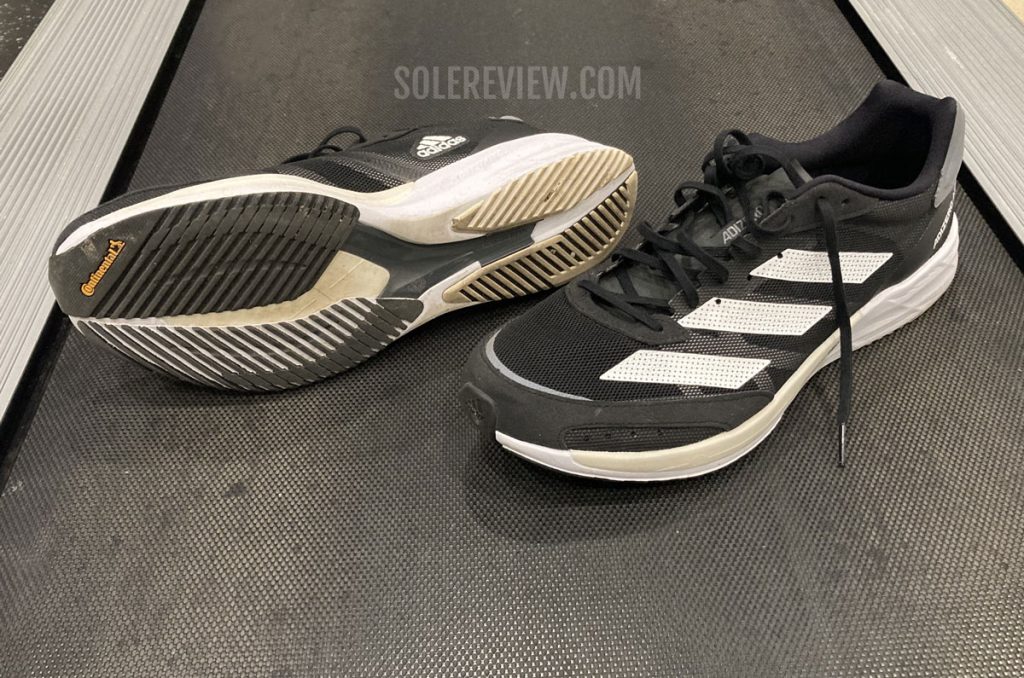
Not everyone goes running on the road – for many people, it’s the treadmill where they go to run. That’s usually preceded – or followed by – some kind of strength training.
A higher heel-to-toe offset moves the center of gravity forward. This helps those with back problems during lifting exercises, since it allows them to remain balanced even when they bend down. For this reason, trainers used in weightlifting often have a raised drop. One example is Nike’s Metcon 7 which we reviewed recently.
As a final note, 8 mm offset running shoes are widely available
Even though there are many different types of running shoes available, finding one with the right drop is easier because they’re offered in a larger range. Not only does this make it easy to find what you’re looking for in terms of upper construction, style and cushioning levels, but this variety means you’ll most likely be able to find what you need.
In order to make it easier for you to find what you need, we’ve divided this list into five categories – Everyday Trainers, Soft Running Shoes, Stability Shoes, Trail Runners, and Speed Shoes.
Asics Gel-Cumulus 24 (10 mm offset)
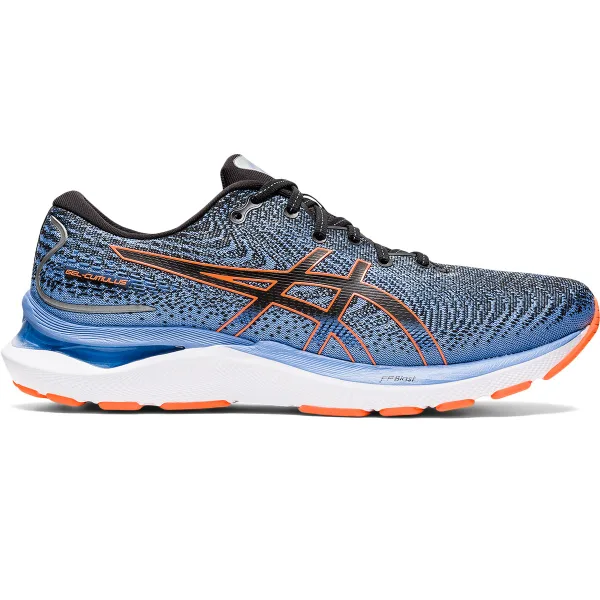
This 10mm drop trainer has become a popular choice for runners who are looking for versatility without sacrificing comfort. It is often described as being the tamer option between the plush Nimbus or the ‘neutral’ version of the GT-2000 due to its soft but resilient cushioning and comfy upper material. However, this shoe does have its flaws, some people may find it too wide or short fitting.
The Flytefoam midsole (and decorative Gel) strike the perfect balance between mileage-friendly comfort and use case versatility. It is an excellent everyday running shoe, and it can also handle heavy training sessions.
The Cumulus 24 has a whole new midsole that’s made of something called Flytefoam Blast. So the ride character has more oomph than the Cumulus 23, but we found out all about it when we put these through rigorous testing.
The new one-piece design of the upper makes for a softer and smoother interior. Padded heels keep you comfortable throughout wear, while an inner sleeve supports you from all angles.
Asics Gel GT-2000 10 (8 mm heel offset)
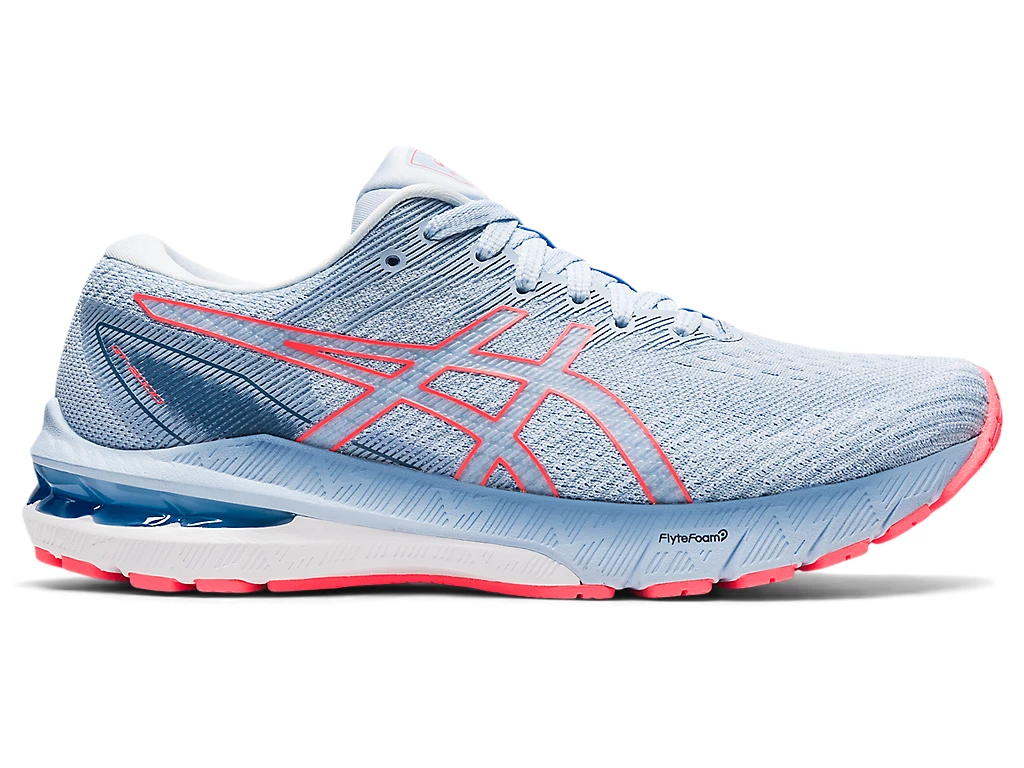
Here’s what you need to know about the newest version of the GT-2000, found elsewhere on this site.
This is the first time that Asics does not advertise the Dynamic Duomax on the GT-2000, which is what they call a medial post.
However, the inner density foam does make an appearance in this shoe. It’s just not apparent from the outside of the shoe so it has little effect on the overall ride quality but does provide a more stable feel when used for long distance running. The white Flytefoam cushioning makes these trainers one of the most comfortable pairs out there.
And as always, the top is comfortable, safe, and comes in different widths. The GT-2000 has an 8mm heel-to-toe offset.
Also see: The Saucony Guide 15 (8 mm heel drop) provides a significantly firmer ride – if that’s what you’re looking for. Our review is here.
Nike Air Zoom Structure 24 (8 mm heel offset)
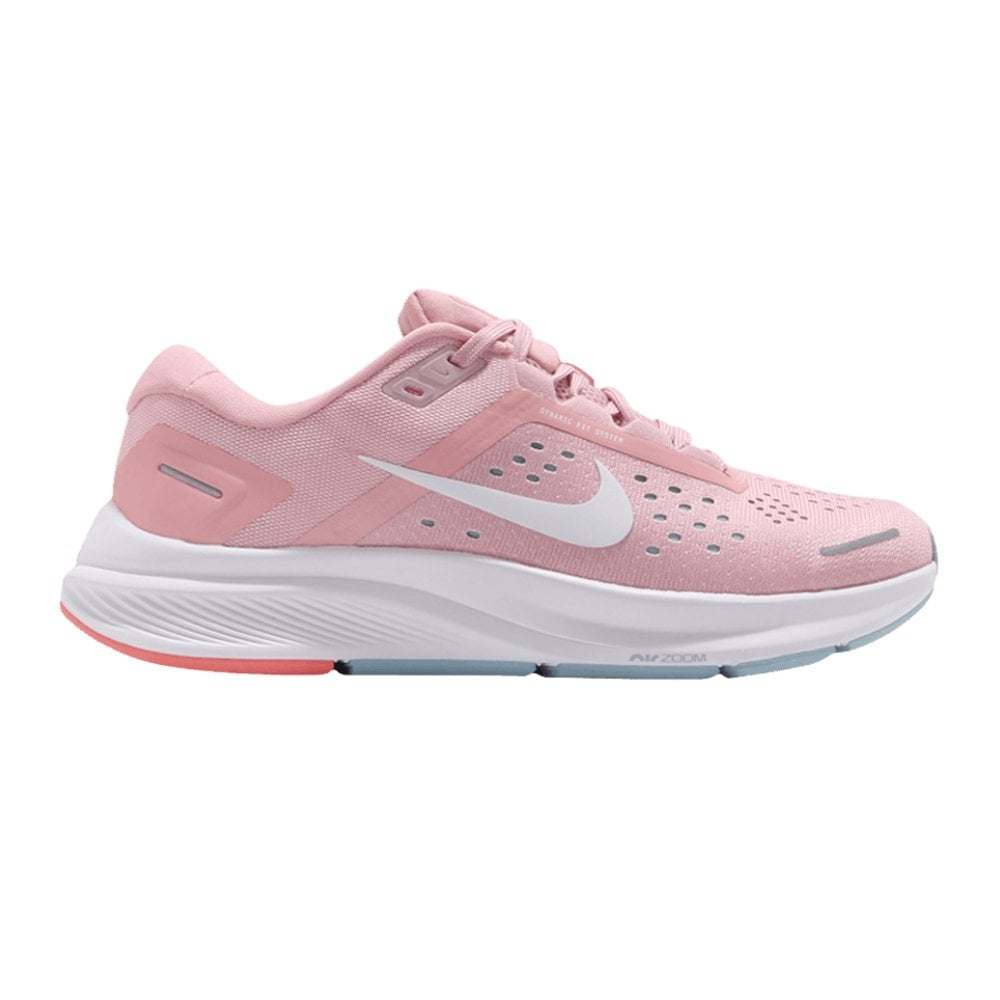
Between the Vomero 16 and Structure 24, we’d choose the latter as a daily training shoe.
The shoe felt structured, padded, and speedy underfoot – because of the Zoom Air cushioning. The 8mm heel-to-toe difference was capable of being used in daily runs, long distance traveling or even the occasional tempo workout! The 24 shared the same outsole with the 23; thus, our review from last year is applicable to this pair as well.
The upper is also wonderfully designed; there’s plenty of cushioning provided by the foam padding and tongue, while it is secured to my foot with laces.
Asics Novablast 2 (8 mm offset)
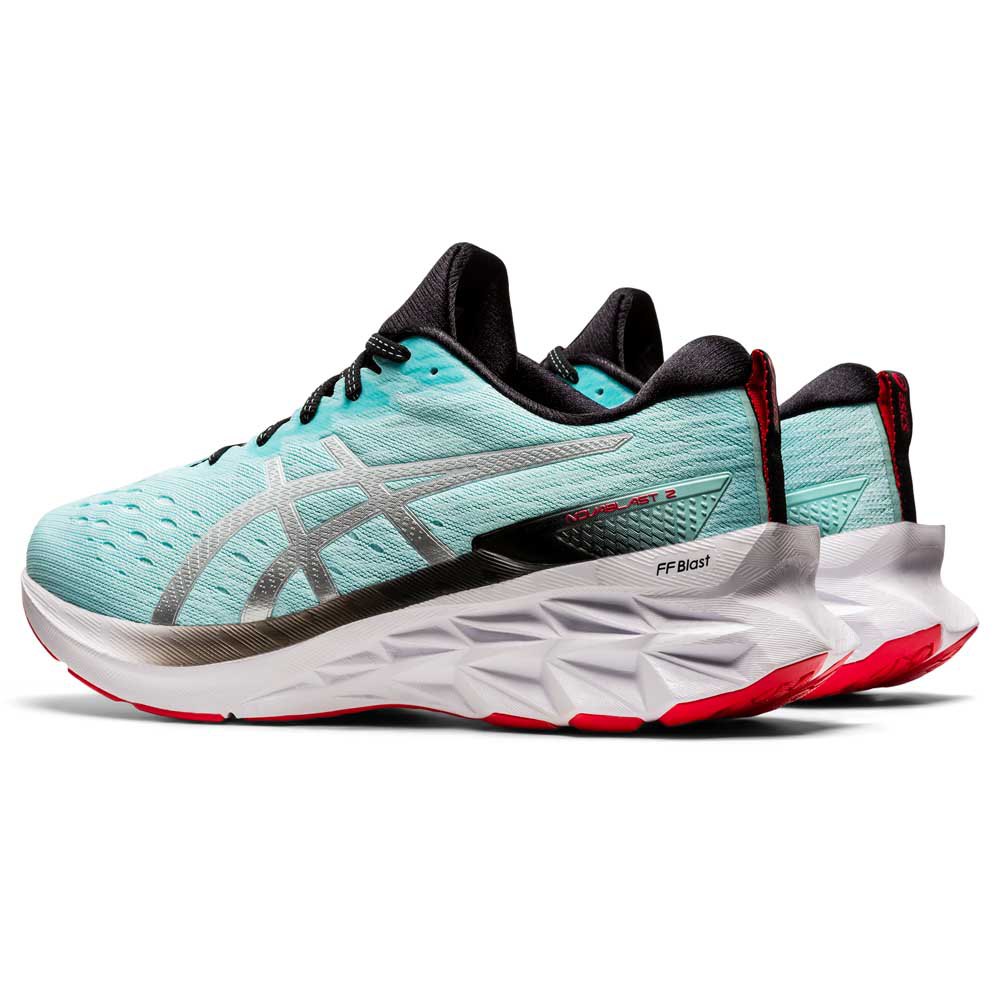
Shoes are typically categorized into two groups – the safe and bland or those who catch people’s attention. If you’re looking for something that will pique your interest, take a look at these Asics Novablast 2s!
It’s a shoe that is both comfortable and makes you want to move quickly which makes it perfect for day-to-day use as well as quick paced running.
Even though the midsole was well cushioned, the ‘Blast’ version of this foam made it bouncy and responsive. Add to that a design with a rocker profile which would ease me into rolling forward when I put my weight down on my heel first.
Additionally, the Novablast 2 performs well for forefoot strikers; yet another example of how it doesn’t matter that there is an 8mm drop.
A running shoe with a heel offset ranging from 8 to 10 millimeters
Nike ZoomX Invincible Run Flyknit (9 mm heel drop)
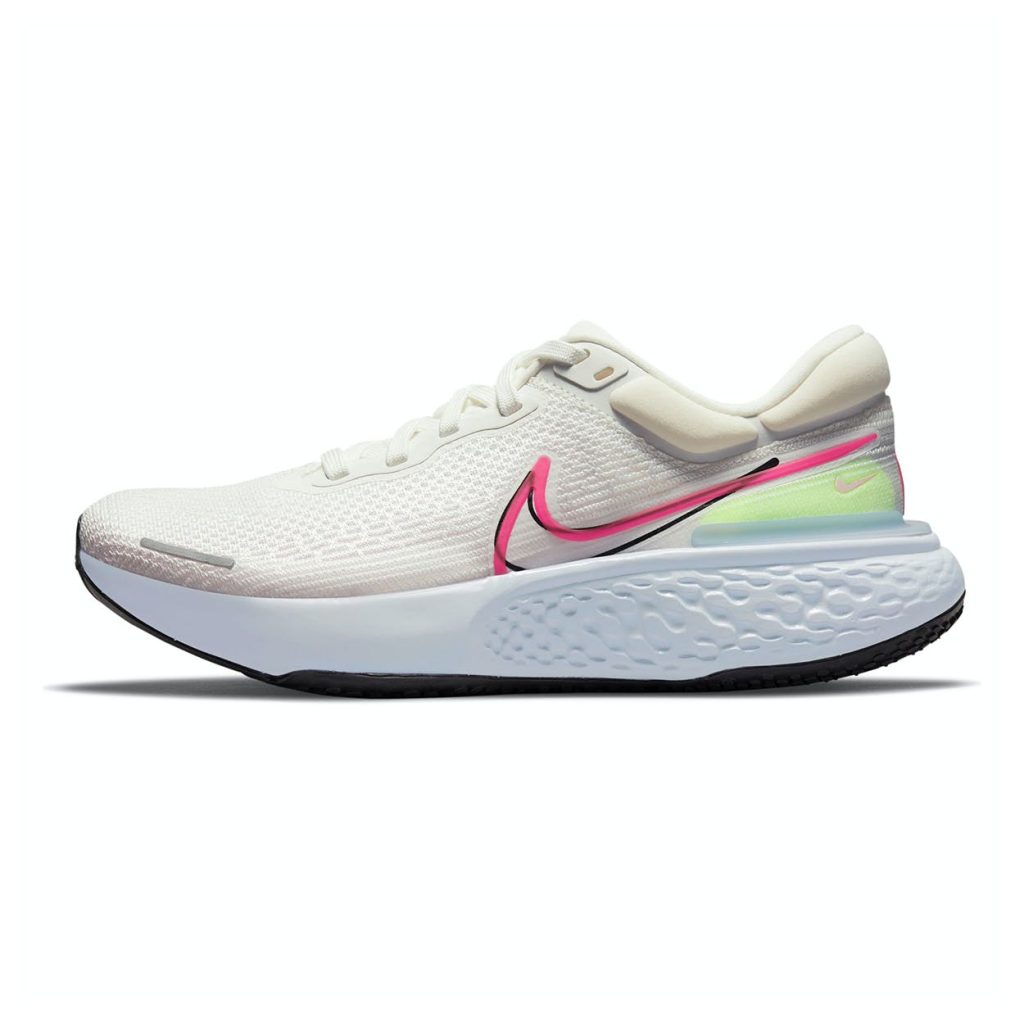
If you are looking for the most cushioned shoe ever created, then I highly recommend the Nike ZoomX Invincible Run. The thick and durable midsole is made of 100% ZoomX foam – exactly what powers the Vaporfly. This shoe is light yet still provides a good amount of cushioning to help ensure that your feet won’t hurt after hours of running.
It’s only natural that the comfortable midsole is matched with a spacious upper and soft interior.
However, there’s a caveat – the Invincible Run is best used for easy cruises but not for fast sprints.
Even though the shoe has the same ZoomX foam that makes the Vaporfly a fast shoe, there’s no Carbon plate inside the Invincible Run. It doesn’t give off much stability like Nike’s traditional race shoes do, because this one is made with a higher volume design.
Asics Gel-Nimbus 24 (10 mm heel-to-toe offset)
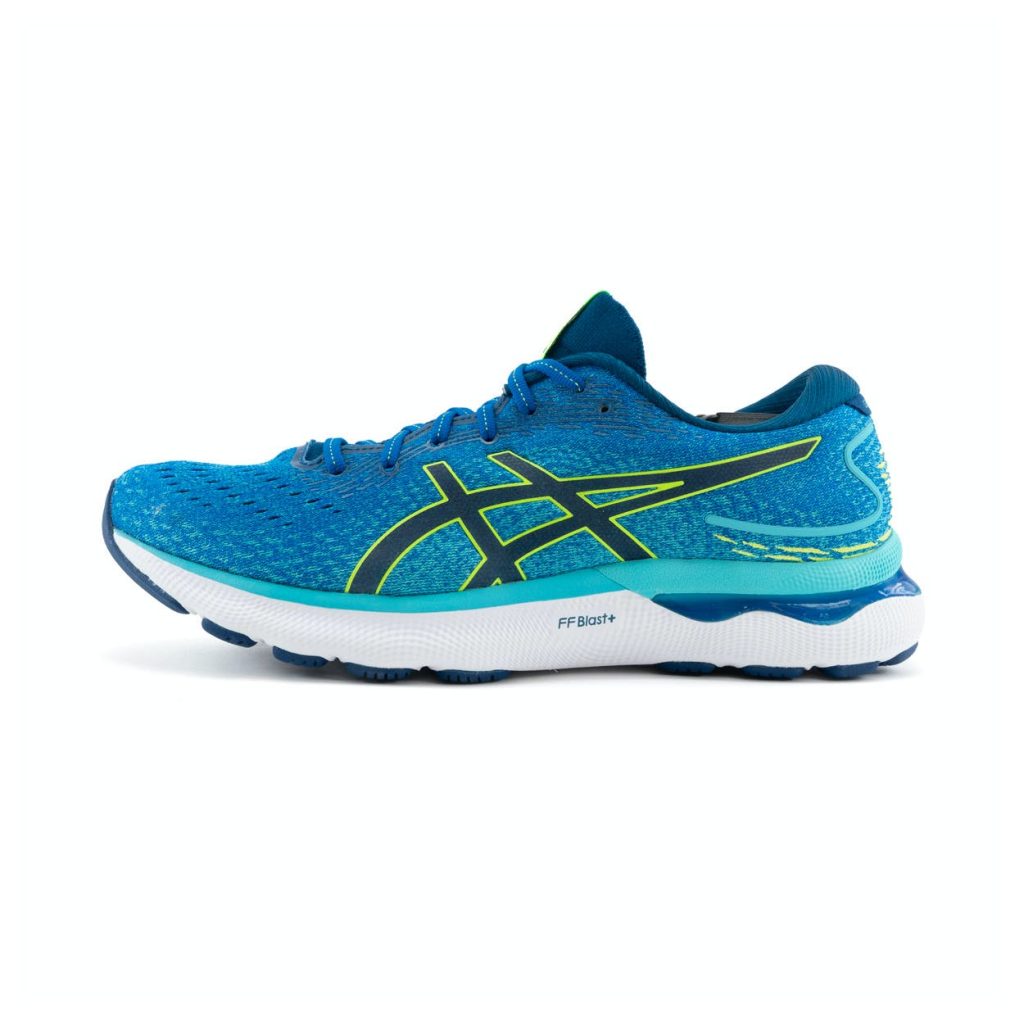
For a long time, the Nimbus was marketed as the pinnacle of Asics’ neutral cushioning abilities. Its name – based on a type of cloud – called to mind an airy and easy-to-run experience for those who wear them.
To give credit where it is due, the Nimbus lived up to its claims – despite the disappointing Gel technology not being up to standard. For example, last year’s model of the Nimbus 23 had a plush and cushioned ride, matched with an equally comfortable upper construction.
Though the top layer may appear similar to its predecessor, the Nimbus 24’s core has undergone a significant change; its midsole is now crafted out of Flytefoam Blast – which produces an extremely soft yet durable finish just like those found on other ASICS models.
With these updates, the Nimbus 24 is still a cushioned running shoe but now possesses an increased sense of responsiveness that wasn’t present before. This isn’t a bad thing – this new version makes up for lost time and keeps up with trends while retaining its quality. In fact, our latest review explains what has changed on this specific model and why we’re excited about it!
Stability shoes with a heel offset of 8 to 10 mm in the middle
1) New Balance Fresh Foam Vongo V5 (8 mm heel drop)
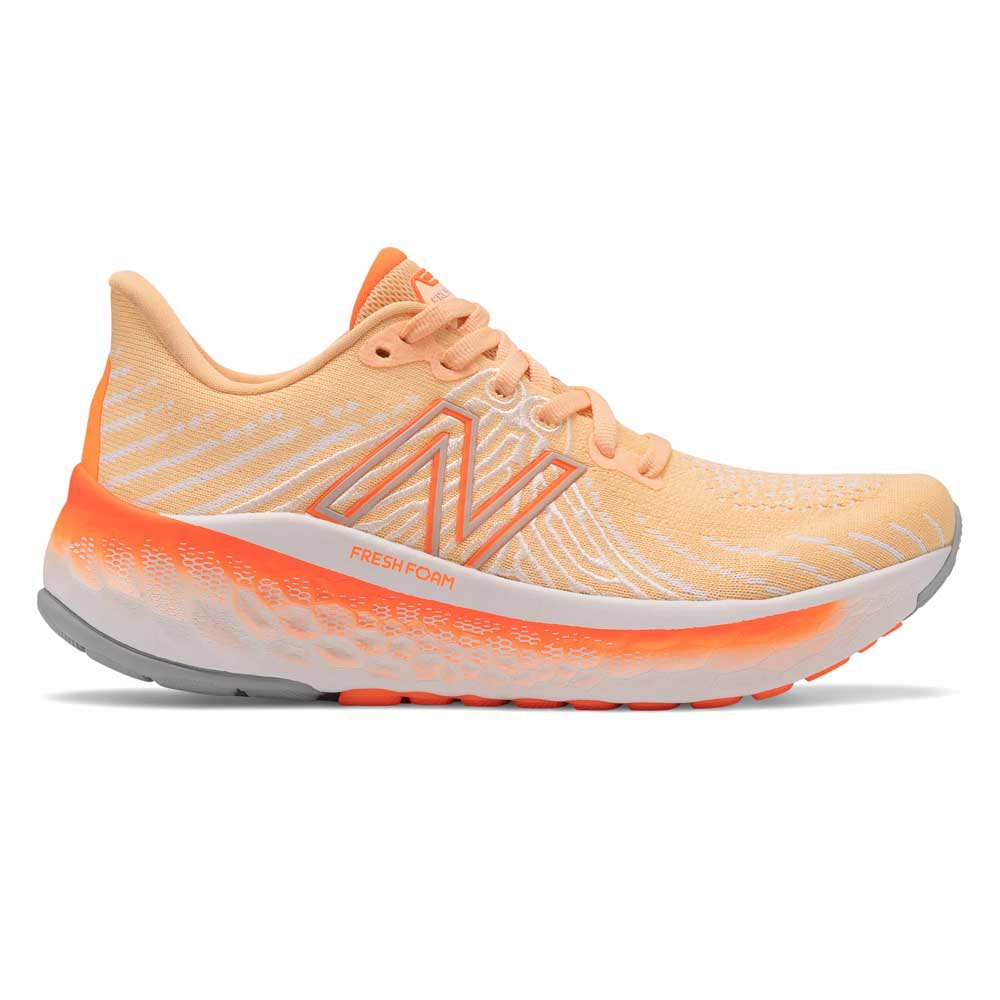
While many other brands are eliminating the posts from their shoes, New Balance is busy adding them back in.
It was never made with a medial post before, but we added one this time around.
Unlike the earlier models that combined a deep outsole channel with a supportive inner midsole, Vongo V5 now has an actual medial post. This makes the Vongo V5 a stability shoe with cushioned insoles – we can draw parallels to New Balance 1260 here.
With a Fresh Foam X Midsole, this shoe offers excellent support for longer distances. It also comes in different widths and has a sleek, comfortable design.
Asics Gel Kayano 28 (10 mm heel-to-toe offset)
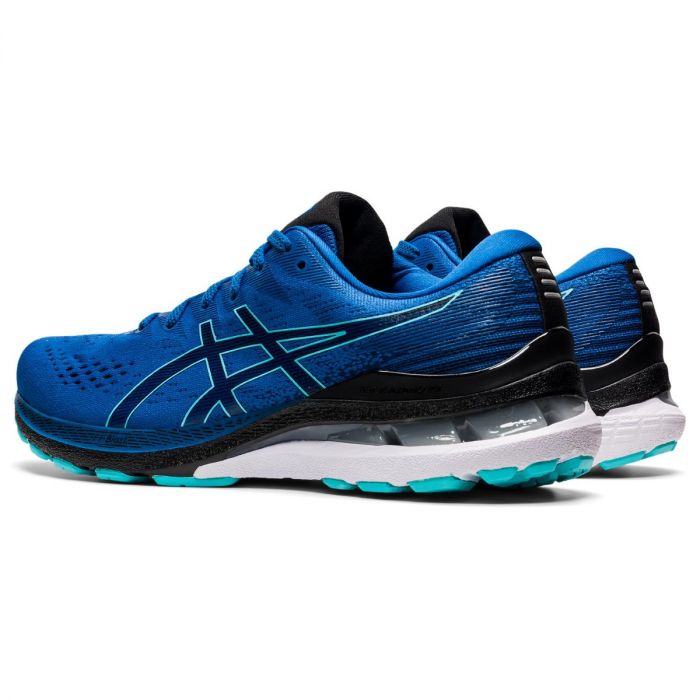
The Asics Kayano 28 is one of the few remaining running shoes with a firmer medial post, which will likely follow in the footsteps of the GT-2000 10 for its next iteration.
There’s a good chance that the Asics Duomax won’t be the defining characteristic of the Kayano 28. Most stability shoes (like the Brooks Adrenaline, Nike Structure, Saucony Guide) have evolved into supportive neutral form factors. So it makes sense for Kayano to evolve too.
Furthermore, the Kayano 28 is a supportive neutral running shoe. The firmer wedge can’t be felt at all when running in it.
The Flytefoam material used in the shoe absorbs shock from both short-term running and long distance workouts. Plus, stability features like the molded heel clip and firmer midsole layer make it super supportive when you’re on your feet for hours at a time.
The engineered mesh upper is comfortable and comes in multiple widths.
A heel offset of 8 to 10 mm makes these running shoes speed-friendly
Adidas adizero adios 6 (8 mm heel drop)
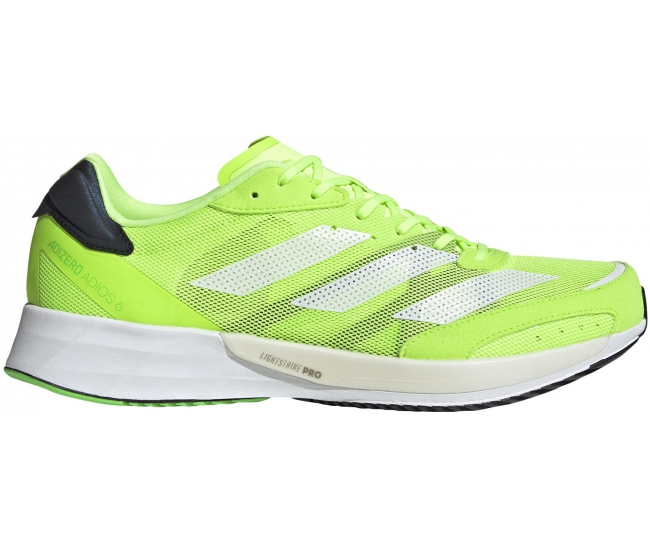
This adios 6 is just one more way to keep yourself upright when running because it has a high heel drop that most people prefer. A ribbed Continental rubber outsole offers the maximum amount of traction and stability when transitioning from landings to forward motion.
Even though the Adidas Adios 6 has changed a lot from previous versions, it still remains an excellent sneaker for races and fast paced runs.
One of the most notable features of the adios 6 are its soft, comfortable midsoles. Composed of both Lightstrike Pro and Lightstrike EVA foam, they provide plenty of shock absorption while still maintaining low-profile stability. This makes it so that you can wear them all day without feeling worn out or sore at all–just like how an old Boston feels when you slip them on after a long day at work.
Saucony Endorphin Speed V2 (8 mm heel drop)
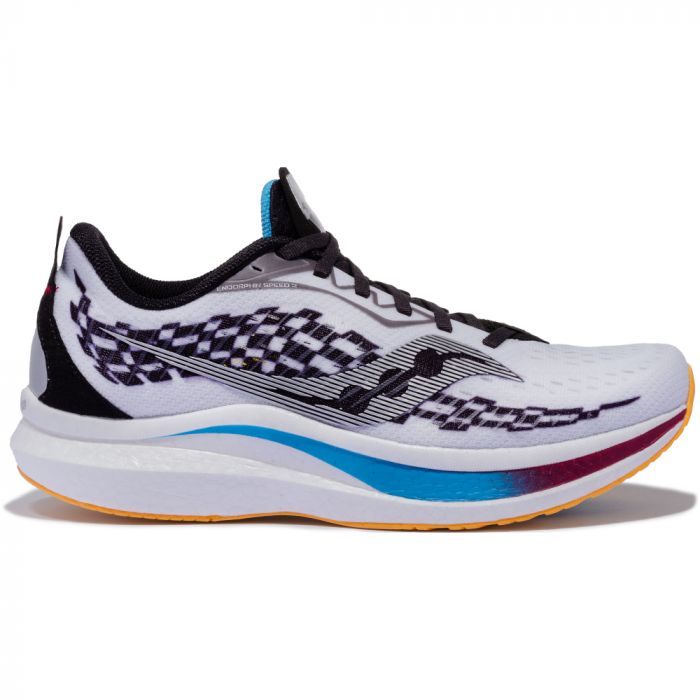
Never judge a shoe by its heel drop, and the Saucony Endorphin Speed 2 is proof. With an increased height at the back of the foot, it provides an excellent level of cushioning for those who strike with their toes first.
It’s not just any 8mm drop shoe; the Endorphin is so much more than that. The lightweight PEBA midsole is perfect for long distance running, and the Nylon plate provides enough cushioning. Spring-like action under my heel, coupled with a rocker front foot ensures this shoe is soft but also speedy at the same time.
The Saucony Endorphin Speed is undoubtedly one of the most comfortable shoes. And it all starts with its soft and breathable mesh shell that makes sure my feet are securely wrapped around the cushioned midsole.

